
10.17. Image Capture
This unsung little program is something of an orphan. It was designed to download
pictures from a USB digital camera and then process them automatically (turning them
into a Web page, scaling them to emailable size, and so on). Of course, after Image
Capture's birth, iPhoto came along, generally blowing its predecessor out of the water.
Even so, Apple includes Image Capture with Mac OS X for these reasons:
• Image Capture makes it easy to download only some pictures from your camera
(Figure 10-11). Until iPhoto '08 came along, iPhoto could only download the
entire contents of your camera's memory card.
• Image Capture can grab images from Mac OS X–compatible scanners, too, not
just digital cameras
• Image Capture can download your sounds (like voice notes) from a digital still
camera; iPhoto can't.
Figure 10-11. Top: You can set up Image Capture to open automatically
when you attach a USB camera to your Mac. One click (on Download All)
transfers its pictures to your hard drive. Bottom:
If you click Download Some, you get this "slide-sorter" window, where you
can choose the individual pictures you want to download, rotate selected shots
(using the buttons at the top), or delete shots from the camera. In slide-sorter
view, Shift-click the thumbnails of the individual pictures you want. In list
view, Shiftclick or -click as though they're Finder list-view files.
• Image Capture can turn a compatible digital camera into a Webcam, broadcasting
whatever it "sees" to anyone on your office network—or the whole Internet.
Similarly, it can share a scanner with all the networked Macs in your office.
You can open Image Capture in either of two ways. You can simply double-click its icon
in your Applications folder, or you can set it up to open automatically whenever you
connect a USB digital camera and turn it on. To set up that arrangement, openImage
Capture manually. Choose Image Capture Preferences, click the General tab, and
then choose Image Capture from the "When a camera is connected, open" pop-up menu.
Once Image Capture is open, it looks like Figure 10-11.

In Image Capture, you can use the pop-up menus described below.
10.17.1. Download Folder
Use this pop-up menu to choose a destination folder for the pictures. Image Capture
proposes putting photos, sounds, and movies from the camera into your Home folder's
Pictures, Music, and Movies folders, respectively. When the downloading process is
complete, Mac OS X opens the corresponding folder automatically, saving you the
trouble of finding it.
10.17.2. Automatic Task
Download, schmownload—Image Capture is just warming up. It comes equipped to
process the downloaded photos in several useful ways. For example:
• None. Translation: "Just download the pictures, please."
• Build slideshow. After the download is complete, your screen goes black, and a
smooth full-screen slideshow begins, featuring the newly downloaded pictures
gracefully cross-fading one to the next (without musical accompaniment, alas).
• Build web page. Creates an actual, and very attractive, Web page of your
downloaded shots. Against a black background, you get thumbnail images of the
pictures in a Web page document called index. html. (You'll find it in your Home
folder Pictures Webpage folder, which also contains the graphics files
incorporated into this HTML document.) Image Capture automatically opens up
this page in your Web browser, proud of its work.
Just click one of the small images to view it at full size, exactly as your Web site
visitors will be able to do once this page is actually on the Web. (Getting it online
is up to you, although Apple's HomePage feature—part of the .Mac subscription
program described on Section 18.6—is one of the easiest methods.)
iPhoto offers more Web page option sand better-looking results, but Image
Capture is handy when you just need something quick and dirty.
• Crop to 3 x 5, fit to 3 x 5….Each option here creates a photo gallery as a PDF
document (Section 14.5.3), ready to print out and then, presumably, to cut apart
with scissors or a paper cutter. Each offers neatly arranged photos in the
dimensions you've selected.
And what if a photo doesn't precisely fit the proportions you've selected? The
"crop to" options center each photo within the specified shape, and then trim the
outer borders if necessary. The "fit to" options shrink the photo as necessary to fit
into the specified dimensions, sometimes leaving blank white margins.

Note: The "crop" commands never touch the actual downloaded photos. The
downloaded image files themselves retain their full size and resolution.
• Preview. This option opens the fresh pictures in Preview (Section 10.23), so that
you can get a better (and bigger) look at them.
• Other. The beauty of the Image Capture system is that people can, in theory, write
additional processing scripts. Once you've written or downloaded them, drop them
into your System Library Image Capture Automated Tasksfolder.
Then enjoy their presence in the newly enhanced Automatic Task pop-up menu.
10.17.3. Download Some, Download All
Clicking Download All, of course, begins the process of downloading the photos to the
folder you've selected. A progress dialog box appears, showing you thumbnail images of
each picture that flies down the wire.
Clicking Download Some, however, opens the picture browser shown at bottom in Figure
10-11. Now you can select the photos you want to download, rotate, or delete from the
camera. (In icon view, you click and Shift-click to select a bunch of consecutivephotos,
and -click to add individual photos to the selection. In icon view, you can only click
and Shift-click to select individual photos.)
10.17.4. Downloading from Across the Network
You're sitting in front of Macintosh #1, but the digital camera is connected to Macintosh
#2 downstairs, elsewhere on the network. What's a Mac fan to do?
GEM IN THE ROUGH
Image Capture Super-Prefs
Image Capture Super-Prefs Apple spared no expense on this baby. Lurking in
the dialog box that appears when you click the Options button (shown in Figure
10-11) are some very powerful features. They're well worth exploring
The Download Options controls, for example, let you set Image Capture to grab
pictures automatically when you plug in the camera, saving you a click on the
Download button. Here's where you specify, too, that you want to delete the

photos from the camera after they've been downloaded to the Mac—another
step-saving option that prepares your memory card for more pictures.
The Information tab, meanwhile, tells you some highly specific technical details
about the camera or scanner that's currently hooked up. gem in the rough
All right, that situation may not exactly be the scourge of modern computing. Still,
downloading pictures from a camera attached to a different computer can occasionally be
useful. In a graphics studio, for example, when a photographer comes back from the field,
camera brimming with fresh shots, he can hook up the camera to his Mac so that his
editor can peruse the pictures on hers, while he heads home for a shower.
To share your camera on the network, hook it up, choose Devices Browse Devices,
click Sharing, and turn on "Share my devices." Turn on Web sharing, too, if you like
(Figure 10-12). (This trick works with scanners, too.)
Figure 10-12. Connect the camera and turn it on.
Top: Choose Devices Browse Devices and click Sharing.
Middle: Turn on "Share my devices," and "Enable Web Sharing." Note the Web
address in the middle of the dialog box. Click OK.
Bottom: Now anyone else on the Internet can open Safari, type that IP address into
their address bar, and peep at the contents of your Mac's digital camera!("Meet
George Jetson…")
(P.S.—The IP address must be a public address, as described on Section 22.1.)Image
Capture
On the other Mac, open Image Capture and choose Devices "Browsedevices. "Open
the flippy triangle, select the camera, and click Connected. Now the dialog box shown in
Figure 10-11 appears; you can view and download the photos exactly as though the
camera's connected to your Mac.
10.17.5. Downloading from Across the Internet

You can also share your camera's contents with the whole Internet, assuming your Mac
has its own, publicly accessible IP address (Section 22.1). Figure 10-12 has the details for
the setup.
10.17.6. Image Capture as Web Spycam
All digital cameras can share what's currently on their memory cards via the Internet as
previously described. If you have one of a few newer models, in fact, you can actually
control the camera remotely. You can spy on whatever's in the room where the camera is,
taking snapshots on demand. (Can you say, "Babysittercam"?)
Note: The Webcammable cameras include recent Canon PowerShot models, some
Kodaks, and several Nikon digital SLRs.
Figure 10-13. Assuming your scanner is compatible with Mac OS X (that is, if it's
TWAIN-compatible), this preview window appears automatically when you turn on
the scanner and open Image Capture. Open the drawer to specify the dimensions
and resolution you want. Click Overview if you need to repeat the preview. Next,
drag across the image to indicate which part you want to capture (otherwise, the
Scan button is dimmed), and then click Scan when you're ready to go.
To set this up, begin as shown in Figure 10-12. Then, if your camera is one of the
compatible models, the Remote Monitor tab (shown dimmed in Figure 10-12)springs to
life, along with the buttons labeled Delete, Take Picture, and so on.
Clicking Take Picture captures a picture exactly as you would if you'd been next to the
camera and pressed the shutter button.
If you click the Remote Monitor tab, you see, at full size, whatever the camera is seeing;
the image is updated once every minute. (The pictures are blasted to you via the Internet,
but not captured onto the memory card.) Click the light-switch icon to change the shutter
interval.
10.17.7. Scanning



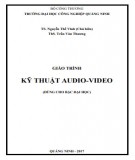
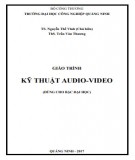
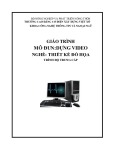
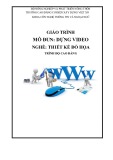
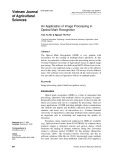



![Tài liệu ôn tập môn Lập trình web 1 [mới nhất/chuẩn nhất]](https://cdn.tailieu.vn/images/document/thumbnail/2025/20251208/hongqua8@gmail.com/135x160/8251765185573.jpg)









![Hệ thống quản lý cửa hàng bán thức ăn nhanh: Bài tập lớn [chuẩn nhất]](https://cdn.tailieu.vn/images/document/thumbnail/2025/20251112/nguyenhuan6724@gmail.com/135x160/54361762936114.jpg)
![Bộ câu hỏi trắc nghiệm Nhập môn Công nghệ phần mềm [mới nhất]](https://cdn.tailieu.vn/images/document/thumbnail/2025/20251111/nguyenhoangkhang07207@gmail.com/135x160/20831762916734.jpg)



